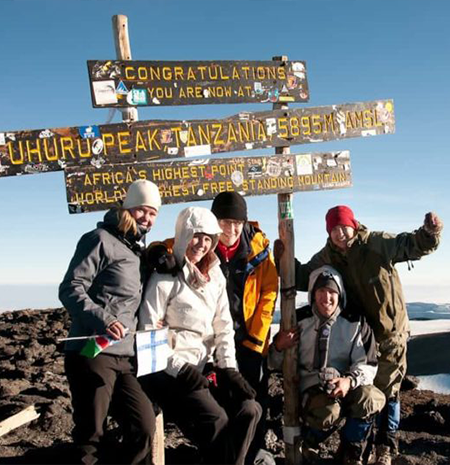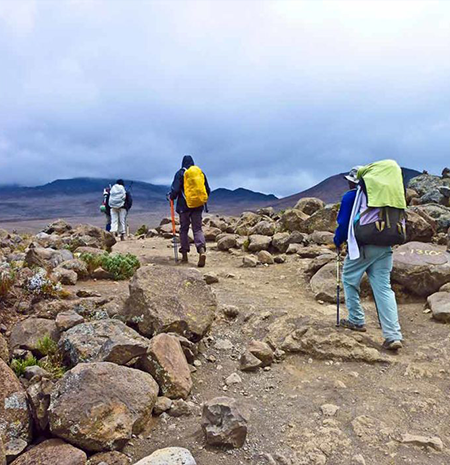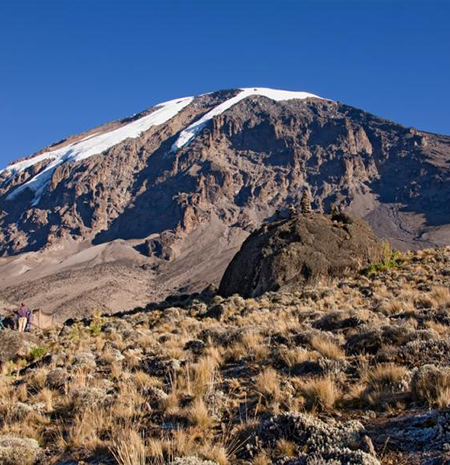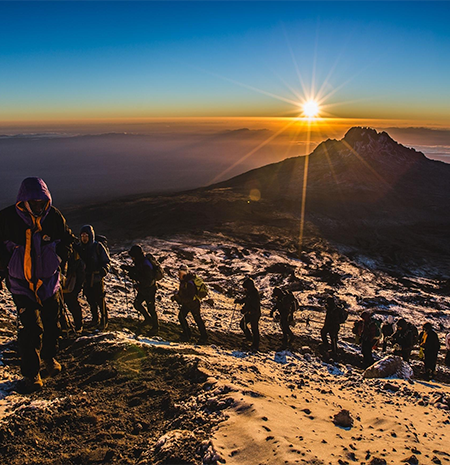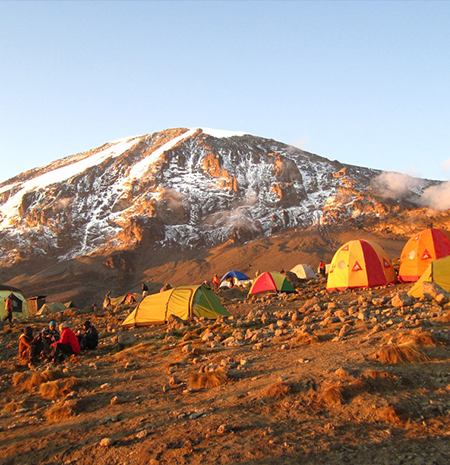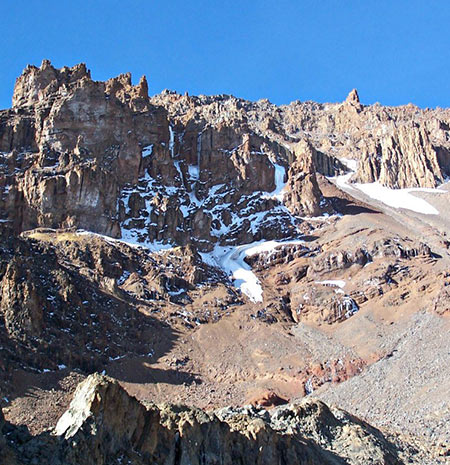The Marangu Route also known as the ‘Coca-Cola’ or the ‘Tourist Route’ is a popular and commonly used route by tourists attempting the Mount Kilimanjaro Climb. And also, this is the only route that offers accommodation in huts and beverages such as Coca-Cola are served as you make your way to the summit.
Regarded as the most historic and established pathway on the mighty Kilimanjaro, the Marangu route – affectionately dubbed the “Coca-Cola” route – offers trekkers a unique blend of adventure and comfort.
Unlike other Kilimanjaro routes, Marangu stands out by offering exclusive dormitory-style sleeping huts, eliminating the need for camping. Trekkers can find solace in the Mandara and Kibo Huts, each furnished with 60 cozy bunk beds. Meanwhile, the Horombo Hut boasts a staggering 120 bunk beds. While these huts provide adventurers with mattresses and soft pillows, it’s essential to pack a trusty sleeping bag for the journey. Besides offering a snug night’s sleep, these huts come with communal dining experiences and a range of washroom facilities. Whether it’s the luxury of flushing toilets and flowing water at the base or the rustic charm of long drop toilets at the Kibo Hut, Marangu ensures you’re well catered to.
Many hiking enthusiasts choose the Marangu route, not just for its amenities but also for its reputation as the easiest trek up Kilimanjaro. Its gentle slopes and direct trajectory make it a favorite among beginners. However, this advantage also presents a challenge: the route’s concise duration may hamper effective altitude acclimatization. Furthermore, those seeking diverse landscapes might find Marangu slightly limiting, as both the ascent and descent overlap, offering similar scenic views. This overlapping also makes Marangu one of Kilimanjaro’s busier routes.
For those keen on embarking on this iconic journey, Kilimanjaro Trails curates both five and six-day private climbs, tailored to your needs. Note that the condensed five-day trek omits an acclimatization stop at Horombo Hut on the third day.
The Marangu Route on Kilimanjaro: A Unique Trekking Experience
Embarking on the Marangu Route offers trekkers an unparalleled Kilimanjaro ascent experience. This path not only showcases panoramic vistas that lead to the pinnacle of Uhuru Peak but also embodies a distinct character and ambiance, setting it apart from other Kilimanjaro routes.
Among its distinguishing features is the unique accommodation setup. Unlike other routes on Mount Kilimanjaro, Marangu strictly forbids camping. Instead of the typical tented nights, adventurers find solace in established huts. These dormitory-style havens stand as a shield against the harsh wind and unexpected rain showers, especially during the rainy months of April and May. With 60 bunk beds each in the Mandara and Kibo Huts, and a more expansive 120 bunk beds in the Horombo Hut, trekkers are assured of relative comfort even amidst the wild.
Within these huts, adventurers can rest on bunk beds, furnished with basic yet comforting mattresses and pillows. Additionally, the availability of various treats like candy bars, bottled water, and soft drinks has led to its endearing moniker, the “Coca-Cola Route.”
Despite its gentle and consistent inclines leading to the daily camp stops, the Marangu Route is more than just an easy stroll. It challenges and delights, ensuring trekkers experience the majesty of Kilimanjaro in a one-of-a-kind manner.
The Marangu Route on Kilimanjaro: A Classic Yet Challenging Trek
While the Marangu Route boasts panoramic vistas and a distinct trekking ambiance, trekkers must not be lulled into underestimating its challenges. The approach to the penultimate camp alone sees a grueling vertical ascent of approximately 1000 meters, demanding both physical stamina and determination.
Every Kilimanjaro summit day brings its trials, regardless of the route chosen. The reward, however, is the unparalleled satisfaction of those final steps to the peak, relishing the achievement.
Being one of the swiftest paths to Uhuru Peak. Completable in a mere five days; the Marangu Route magnetizes those with time constraints. However, this brisk timeline comes at a cost. The shortened duration compromises altitude acclimatization, causing the Marangu Route to have the most notable failure rate among all Kilimanjaro routes. Aspiring climbers should weigh this when considering the Marangu journey.
Another distinguishing feature of the Marangu Route is its singular trail for both ascent and descent. While this means soaking in the scenic beauty twice, the repetitiveness might not appeal to everyone. The doubled foot traffic, going up and coming down, also results in the trail being considerably busy at times.
Yet, for those seeking an authentic Kilimanjaro experience, the Marangu Route remains an iconic and captivating choice, providing a direct path to the Roof of Africa.
For those wishing for a private trek, Climbing Kilimanjaro offers the Marangu expedition in both five and six-day variations. Note that the five-day version skips the acclimatization halt at Horombo Hut on the third day.
